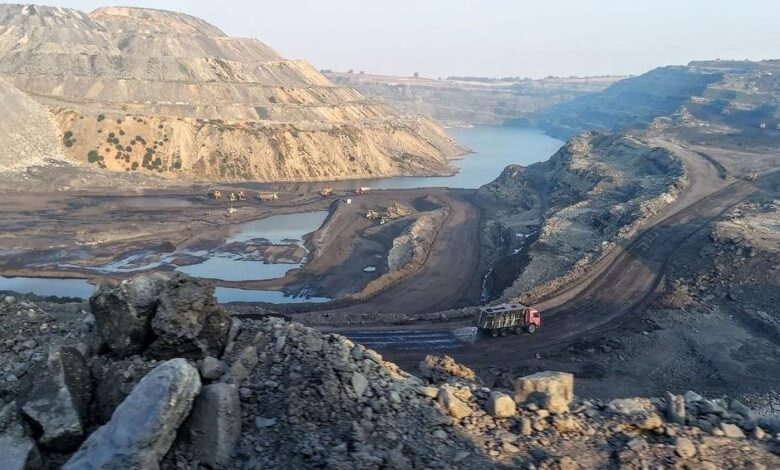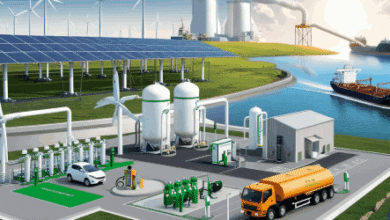Coal fuels India’s self-reliance in energy
Conducive policy environment and adoption of advanced technologies have enhanced India’s mining capabilities

India has secured the 2nd and 4th spot in the list of the World’s 10 largest coal mines.
Coal plays a critical role in meeting the energy needs in India, accounting for 55% of the country’s energy need. The country’s industrial heritage was built upon indigenous coal. Commercial primary energy consumption in India has grown by about 700% in the last four decades.
The current per capita commercial primary energy consumption in India is about 350 kgoe/year (Kilogram(s) of oil). Driven by the rising population, expanding economy and a quest for improved quality of life, energy usage in India is expected to rise.
Recently, Chhattisgarh-based Coal India subsidiary South Eastern Coalfields Limited’s (SECL) Gevra and Kusmunda coal mines have secured the 2nd and 4th spot in the list of the World’s 10 largest coal mines released by WorldAtlas.com. These two mines produce more 100 million tons of coal annually accounting for about 10% of India’s total coal production.
This has been possible due to adoption of advanced technology for mining activities. These mines have deployed some of the World’s largest and most advanced mining machines such as the “Surface Miner” that extracts and cuts coal without blasting for eco-friendly mining operations.
The Gevra opencast mine has an annual production capacity of 70 million tons and produced 59 million tons of coal in FY 2023-24. Kusmunda OC mine produced more than 50 million tons of coal in FY 2023-24, only the second mine in India after Gevra.
Production and demand of Coal in India (2019-20 to 2023-24)
|
Year |
2019-20 |
2020-21 |
2021-22 |
2022-23 |
2023-24 (Projected) |
|
Production |
730 |
716 |
778 |
893 |
997 |
|
Demand |
955 |
906 |
1027 |
1115 |
1196 |
Source: Annual report 2023-24, Ministry of Coal, Government of India
With the growth in GDP and accelerating electrification, the demand for coal is expected to rise in the coming years. The overall coal demand has accelerated by 36%, up from 955 MT in 2019–20 to 1196 MT in 2023–24.
The demand from the power sector dominates the total coal demand (65%). Notably, due to the prudent policy initiatives of the government, most of the demand is met by indigenous production. The total coal production has increased by 25%, up from 730 MT in 2019–20 to 997 MT in 2023–24, meeting most of the coal demand by domestic production.
According to the Ministry of Coal estimates, coal demand is estimated to increase to about 1.5 billion tonne by 2029–30. The government has taken several initiatives to boost domestic coal production and phase out coal imports.
Recently, there has been a pronounced emphasis on Research & Development (R&D) in coal technologies, focusing on enhancing existing applications and exploring future-oriented fields to ensure sustainable growth over the long term. The R&D efforts are particularly concentrated on production methods, safety measures, environmental impact, and sustainability.
To further enhance coal production and productivity, the exploration of clean coal technologies alongside artificial intelligence and machine learning in smart mining is being emphasized. For the fiscal year 2024-25, an allocation of Rs. 21.00 Crores has been designated for Research & Development under the Central Sector Scheme.
Additionally, a ‘Hackathon on Coal Gasification’ is scheduled for 2024-25, aimed at leveraging this essential natural resource to fulfill the energy and chemical requirements of the nation, thereby promoting economic self-sufficiency and environmental sustainability.
Some of the major initiatives undertaken include Single Window Clearance to speed up the operationalisation of coal mines, amendment of Mines and Minerals (Development and Regulation) Act, 1957 to allow captive mines to sell up to 50% of their annual production after meeting the requirement of the end use plants.
In addition, production through Mine Development Operator (MDO) mode, increasing use of mass production technologies, new projects and expansion of existing projects, and auction of coal blocks to private companies/PSUs for commercial mining have been adopted. 100% Foreign Direct Investment has also been allowed for commercial mining to steadfast the growth of coal production in India.
The rise in coal production has multitude of benefits. It would enhance self-sufficiency, bolster energy security, generate revenue and create job opportunities in the economy. In addition, this would diminish reliance on foreign sources, and protect against global price volatility in the uncertain geopolitical conditions. Morover, these prudent measures would position India as a key player in the international coal sector providing opportunity to capitalize on the growing global demand for the fossil fuel.
In conclusion, coal remains a cornerstone of India’s energy landscape, vital for meeting the nation’s growing energy demands. The substantial increase in commercial primary energy consumption, driven by a burgeoning population and economic expansion, underscores the importance of coal in India’s industrial and energy sectors.
The significant achievements of mines such as SECL’s Gevra and Kusmunda highlight the advancements in mining technology and the country’s commitment to eco-friendly mining practices.
With the projected rise in coal demand to 1.5 billion tonnes by 2029-30, the Indian government has undertaken numerous initiatives to boost domestic production, reduce dependency on imports, and ensure sustainable growth.
These measures, including policy reforms, enhanced R&D efforts, and the adoption of clean coal technologies, are poised to strengthen India’s energy security, promote economic self-sufficiency, and position the nation as a key player in the global coal industry.
The anticipated benefits, such as job creation, revenue generation, and reduced vulnerability to global market fluctuations, further underscore the strategic importance of coal in India’s energy future.
Source: NewsBomb















